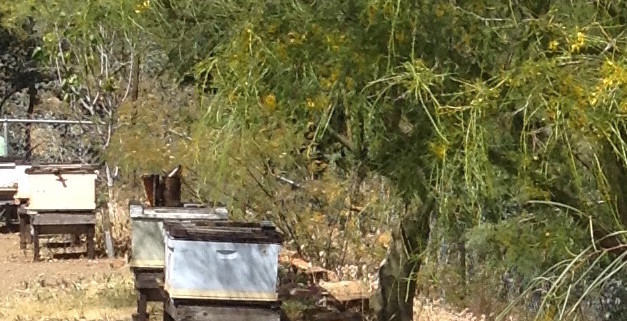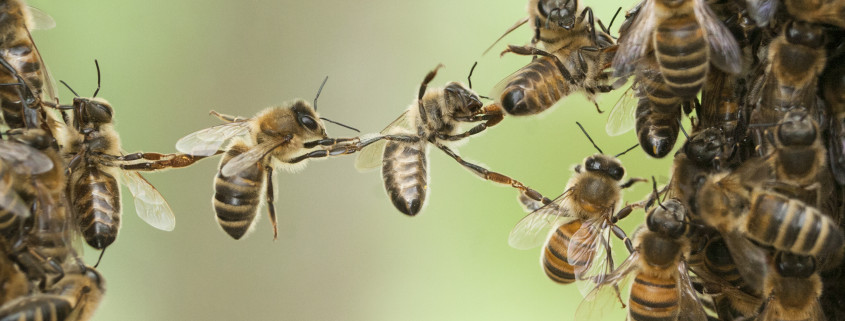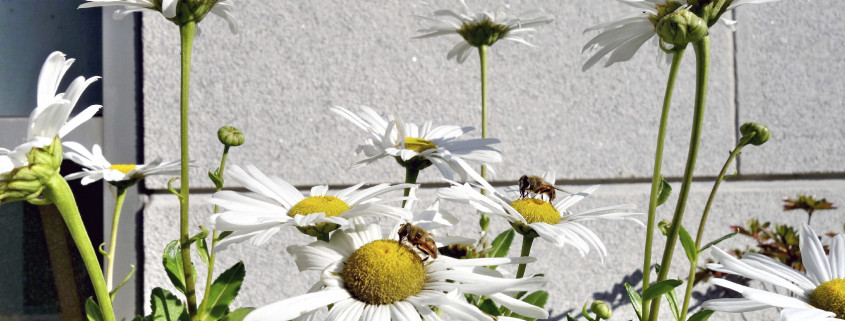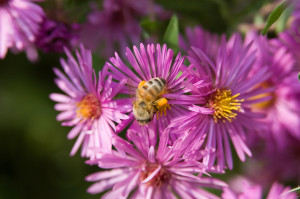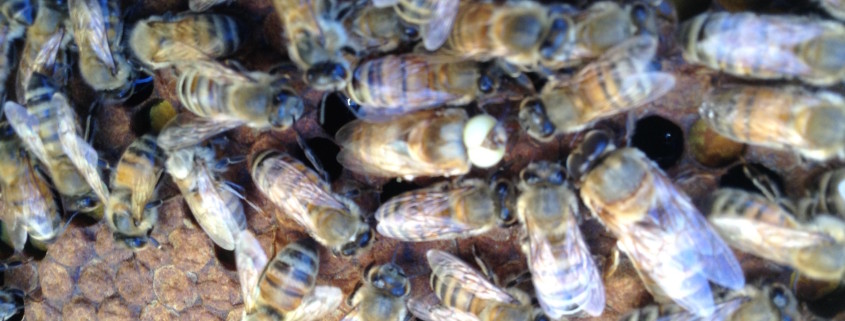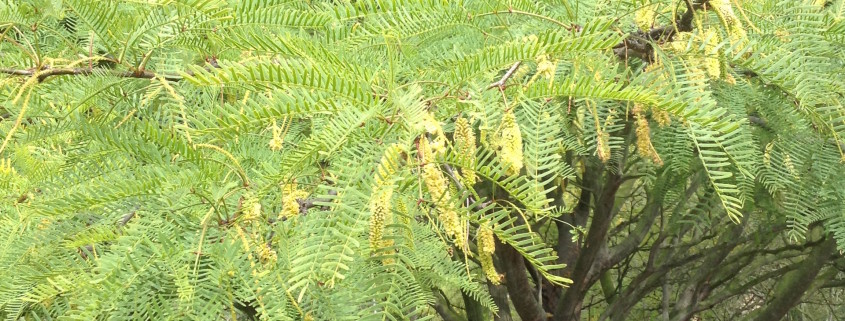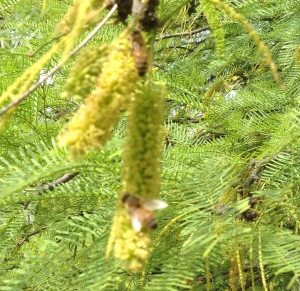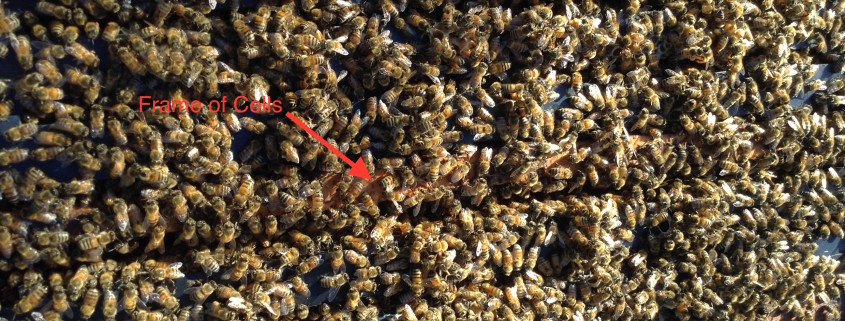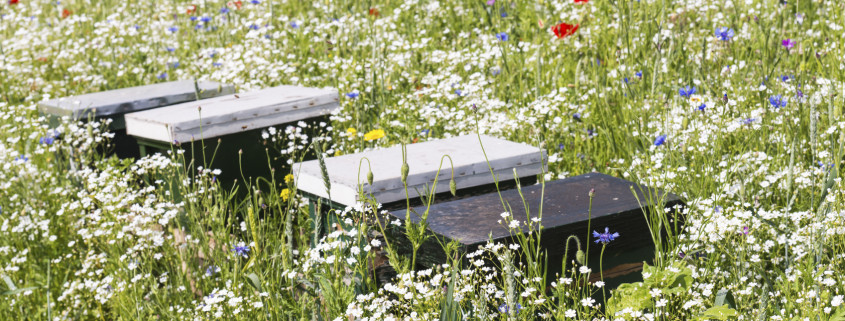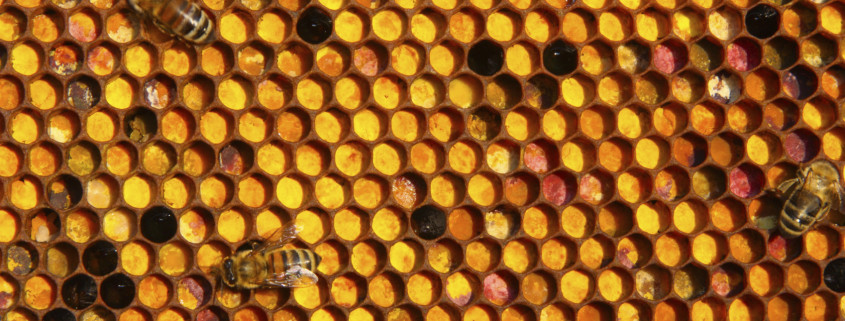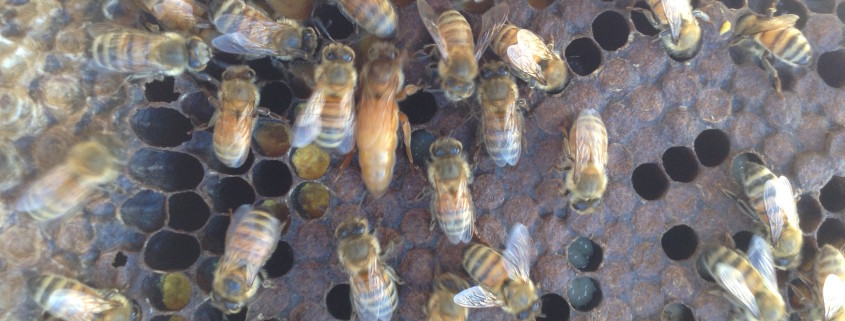Summer Shade
A common question among beginning beekeepers is whether it is more advantageous to place a bee colony in the sun or in the shade. There are advantages and disadvantages to both, but all things being equal, bee colonies will usually do better in the sun rather than the shade. There are a number of reasons for this. For some reason, small hive beetles and tracheal mites seem to prosper in the shade. Also, bees tend to forage more when they are exposed to sunlight, bringing in more food and nutrition for the hive. But the strongest reason for keeping bees in a sunny location is to take advantage of the solar heating that becomes essential to the bees well being during the cold, dark days of winter.
Think of your own house. What if you had to choose between giving up heat in the winter versus giving up air conditioning in the summer? Heat is more important. Without air conditioning, you would be uncomfortable in August, but you would survive. Without heating in January, however, you could find yourself in really big trouble! Solar heat is also important to bees, especially because they are cold blooded and must keep their brood nests at or about 93 degrees.
That said, in many warmer and desert climates, some summer shade is a nice benefit to the bees. In some part of the US Southwest, especially during the summer, shade becomes more critical than sun. In temperatures over 110 degrees, which are often reached during the summer in Nevada, Arizona and parts of California, shade is actually a necessity – a matter of life or death. Bees can die at 110 degrees if kept in the sun and without shade.
Here at Wildflower Meadows, our seasons are pretty moderate. For the most part, summers are not too hot, and winters are not too cold. Most of our colonies are situated in the sun, but a few are slightly shaded. The colonies pictured here, several of our champion breeders, are sitting below the light shade of a palo verde tree. On this hot August day, they’ve got bragging rights over their sunny neighbors who are not too far away, but in the full sun baking. Today, these shaded colonies have it made: they’ve got a feeder full of cool syrup, some pleasant shade, and a nice breeze to make for a perfect summer day!

